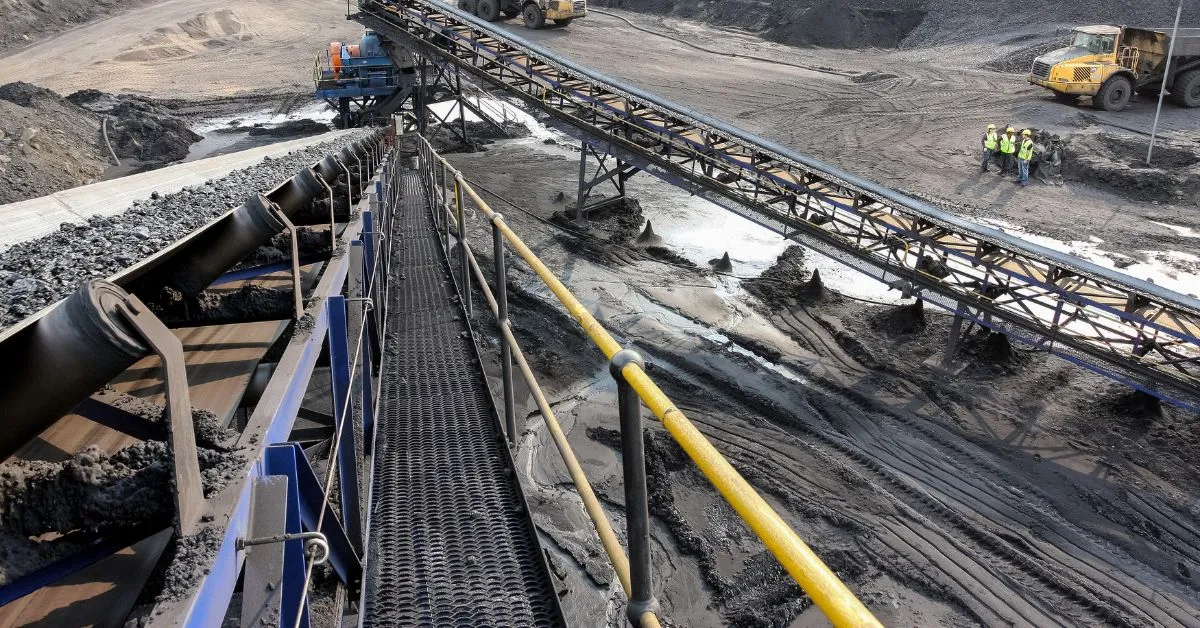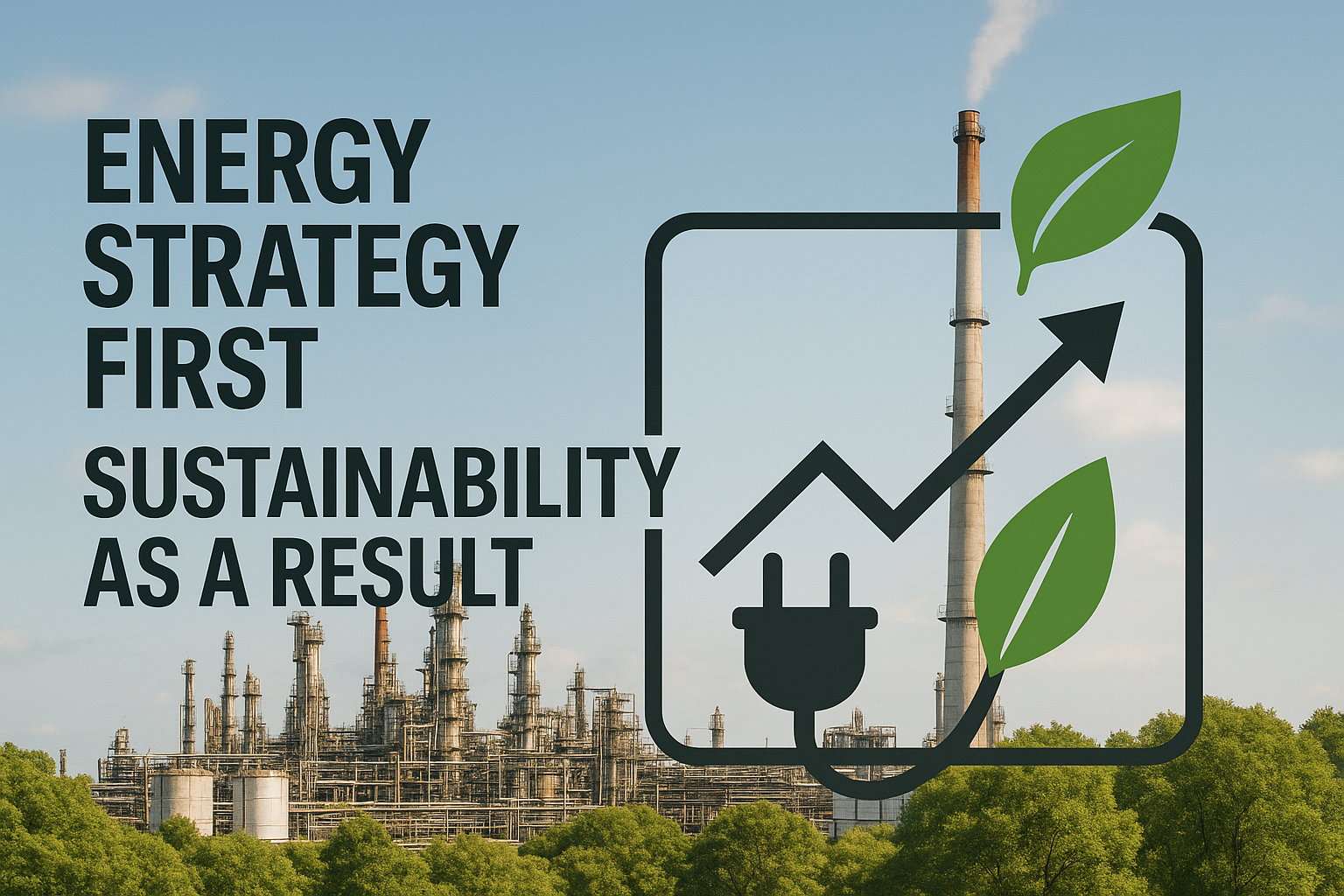Grinding alone can swallow a large chunk of the energy budget, yet falling ore grades still force you to push ever more rock through the mill, driving power bills higher while recoveries slip.
Add frequent mineral misplacement in cyclones and flotation cells, and you’re losing saleable product to the tailings pond every shift. Even routine flow problems can halt an entire plant, turning maintenance crews into emergency responders and inflating costs.
These inefficiencies erode margins from both ends: unit costs rise while tonnes shipped fall. Independent field deployments of industrial AI have already delivered 5-10% in grinding energy savings. If your mandate is to grow profits without new capex, AI has moved from pilot curiosity to board-level expectation.
Why Optimize Your Mining Process With AI
Mining operations face unprecedented pressure from all sides, tightening margins, declining ore grades, rising energy costs, and increasing environmental regulations. In this challenging landscape, optimization isn’t merely advantageous; it’s essential for survival and competitive advantage.
The financial impact is substantial and immediate. Even small efficiency improvements translate into millions in recovered value when processing thousands of tonnes daily. A mere 1% increase in recovery often delivers more value than entire capital projects, while reducing energy consumption directly improves your bottom line through lower operating costs.
Beyond economics, optimization addresses critical sustainability targets that influence investment decisions and social license to operate. Reducing energy per tonne processed not only cuts costs but advances carbon reduction commitments. Improved recovery rates mean extracting more value from already-disturbed land, extending mine life while minimizing environmental footprint.
Perhaps most critically, AI-powered optimization helps address the growing workforce challenge. As experienced operators retire, these systems preserve institutional knowledge and provide newer staff with decision support that would otherwise take years to develop through experience alone.
When these factors converge — financial pressure, sustainability requirements, and workforce evolution — process optimization becomes the strategic lever that determines which operations thrive and which struggle to justify their continued existence.
AI Solutions to Transform Your Mineral Processes
The following proven AI applications offer practical pathways to optimize mineral processing operations without major capital investment. Each solution addresses specific operational constraints while delivering measurable financial returns.
From stabilizing circuit performance to empowering your workforce, these approaches have demonstrated success across the mining industry and can be implemented incrementally to match your site’s priorities and readiness.
Stabilize Grinding and Flotation Circuits
Unstable grinding or flotation circuits quickly erode recovery and throughput when ore hardness, head grade, or feed rate shifts. The problem compounds when operators can’t react fast enough to changing conditions.
Continuous AI control keeps those swings in check by learning the non-linear relationships among hundreds of process variables. Power draw, cyclone pressure, froth velocity—AI models map these connections in ways that traditional control systems simply can’t match. The technology writes optimal setpoints back to the distributed control system (DCS) every few seconds, adjusting mill speed, pulp density, and reagent dosage far faster than any operator can react.
This speed matters. Concentrate grade stays on target instead of drifting into costly giveaway or off-spec tails. Computer-vision add-ons, such as drill-core and froth imaging engines, tighten the feedback loop even further by providing real-time visual data that supplements sensor readings.
For example, a copper concentrator deploying closed-loop AI optimization may see EBITDA improvements of roughly 4–5% while cutting emergency stops. That translates to steadier flotation grades, fewer unplanned shutdowns, and higher daily tonnes milled, all without new capital investment.
Reduce Energy Use Across Comminution Stages
Processing operations consume massive amounts of power, with grinding often claiming up to 70% of a mineral processing plant’s energy budget. That burden grows heavier as ore grades decline and hardness increases, exactly the conditions most mining operations face today. Industrial AI tackles this drain by continuously reading thousands of sensor tags, learning how mill load, ore competency, and motor draw interact in real time.
The AI solution makes precise adjustments that human operators can’t match. It tightens power-draw limits when it detects over-grinding, optimizes crusher settings to reduce recirculating loads, and schedules liner changes before wear forces inefficient operating points. These closed-loop corrections cut kilowatt-hours per tonne while maintaining steady throughput.
Process industry leaders see the financial benefit immediately on utility bills and the environmental benefit through lower CO₂ emissions. Plants deploying these models report 5-10% reductions in grinding energy alongside proportional emissions cuts. For chief operating and technology officers managing decarbonization targets, these savings translate directly into improved margins and measurable progress toward sustainability commitments.
Boost Recovery Rates with Predictive Modeling
When feed chemistry drifts faster than lab sample results arrive, recovery suffers and valuable metal slips into tailings. AI techniques close that gap by building predictive models that learn from every sensor and forecast concentration grade minutes ahead.
These virtual analyzers function like a digital twin of your plant, continuously updating mill operators on where the process is heading and recommending reagent moves before losses appear.
The payoff is material. Similar kinetic models predict achievable recovery under varying residence times and ore blends, letting you fine-tune feed strategy rather than react to concentrate quality issues. Higher recovery, lower tailings grade, and steadier revenue become a daily reality when predictive modeling guides every control move.
Coordinate Plant-Wide Operations More Efficiently
Optimizing a single crusher or mill often pushes the bottleneck downstream, starving cyclones, pumps, or flotation cells, and erasing any local gain. Plant-wide industrial AI models breaks this cycle by treating every unit as part of one dynamic network.
Live data from crushers, mills, cyclones, and flotation cells flow into self-learning models that constantly recalculate optimal feed splits, pump speeds, and reagent targets, then recommend those setpoints for operator review or adjustment in the distributed control system in near real-time.
When cyclone pressure drifts or a pump trips, the model instantly lowers mill throughput and raises flotation air flow, maintaining overall tonnes instead of forcing an unplanned stop.
Because the model understands shifting constraints, you can raise total throughput without new capital, exactly the kind of “do more with what you have” improvement critical for modern operations. Before any change goes live, the system runs scenarios in a virtual replica that functions as a digital twin, so operators see the impact on recovery, energy, and water use first.
Sites already applying plant-wide AI report smoother material flow, fewer surges, and higher daily tonnes processed, while freeing engineers from the constant firefighting that traditional advanced process control could never fully eliminate.
Enhance Operator Visibility and Decision-Making
Moving beyond plant-wide coordination, AI fundamentally transforms how operators interact with their processes. Rather than scattered screens and reactive troubleshooting, operators now can work from more intuitive dashboards streaming live KPIs, color-coded anomaly maps, and ranked recommendations for setpoint changes.
Instead of waiting for off-spec product to appear in the tailings, you catch early warning of ratholing in a silo or a spike in cyclone pressure and can act before throughput drops, preventing the costly flow disruptions that plague traditional operations.
Because the models learn from every mill revolution, recommendations grow sharper over time and feed dynamic simulators that let new operators rehearse emergency moves in a risk-free virtual environment.
Successful adoption hinges on culture: nominating an AI champion for each shift, walking crews through dashboard insights at handover, and celebrating every “caught-before-failure” win dissolves resistance. This shift from reactive troubleshooting to proactive optimization transforms front-line operations into data-driven decision centers.
Transform Your Mining Operations with Imubit’s AI Solutions
The five AI applications we’ve explored represent proven pathways to transforming mineral processing operations. These advancements demonstrate tangible benefits already realized across the industry, from minimizing unplanned stops to boosting daily throughput while slashing energy costs.
An end-to-end Industrial AI platform can deliver every capability outlined above. Imubit’s Closed Loop AI Optimization (AIO) goes beyond traditional approaches by integrating closed-loop AI models with deep-learning process control. Backed by experts, this innovative solution turns opportunities into assured ROI, addressing key industry challenges while delivering heightened efficiency and sustainable gains.
As we look ahead, AI’s role in mineral processing promises transformative potential, making operations not only more efficient but also smarter and more resilient. For those ready to explore these advancements, book your expert-led Plant AIO Assessment!




